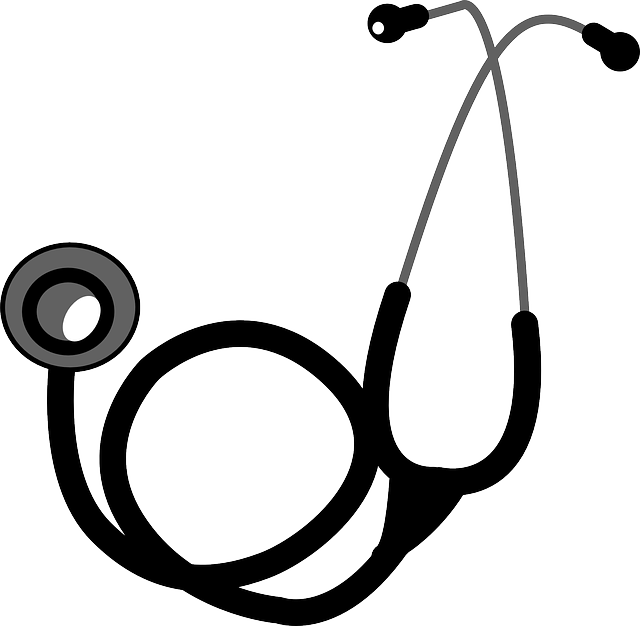Professional liability insurance (malpractice) is a critical shield for doctors, protecting them from potential lawsuits and financial losses due to patient harm caused by negligence. It covers misdiagnosis, treatment errors, and surgical complications, offering defense and reimbursement within policy limits. Assessing risk, understanding specialties' high-stakes decisions, and choosing comprehensive coverage are vital for risk management. Navigating the claims process effectively and maintaining continuous insurance prevent gaps, ensuring doctors can focus on patient care without financial worry.
In the dynamic landscape of healthcare, protecting your medical license through robust malpractice coverage is non-negotiable. This comprehensive guide delves into the intricacies of professional liability for doctors, highlighting why it’s a cornerstone of successful medical practice. We’ll explore common risks, demystify insurance policies, navigate claims processes, and provide essential tips to ensure continuous protection. Understanding professional liability is your first step towards safeguarding your career and patients’ trust.
- Understanding Professional Liability for Doctors: A Comprehensive Overview
- The Importance of Malpractice Coverage in Medical Practice
- Assessing Your Risk: Common Scenarios and Potential Liabilities
- Choosing the Right Insurance Policy for Comprehensive Protection
- Navigating Claims Process: What to Expect and How to Prepare
- Tips for Maintaining Continuous Liability Coverage and Avoiding Gaps
Understanding Professional Liability for Doctors: A Comprehensive Overview

Professional liability, often referred to as malpractice insurance, is a critical component of risk management for doctors and healthcare providers. It protects against potential claims of negligence, offering financial coverage in the event of lawsuits or settlements. This type of insurance is designed to shield medical professionals from significant financial losses that could result from patient injuries or deaths attributed to alleged misconduct.
Doctors’ professional liability covers various scenarios, including misdiagnosis, treatment errors, surgical mishaps, and omissions. When a patient suffers harm due to these incidents, they may file a lawsuit seeking compensation for their damages. The insurance policy steps in to defend the doctor against such legal actions and provides reimbursement for any awarded damages within the policy limits. A comprehensive understanding of professional liability is essential for doctors to ensure they are adequately protected and can practice without undue financial risk.
The Importance of Malpractice Coverage in Medical Practice

In the high-stakes world of healthcare, where every decision can have significant consequences, having robust malpractice coverage is non-negotiable for medical professionals. Malpractice insurance acts as a shield, protecting doctors and healthcare providers from potential financial ruin caused by medical mistakes or negligence. It offers financial security in case a patient files a lawsuit, ensuring that practitioners can cover legal fees and any damages awarded.
The importance of malpractice coverage cannot be overstated, especially for doctors facing mounting legal complexities and increasing liability risks. This insurance is a vital component of risk management, enabling professionals to focus on patient care without the constant worry of financial exposure. With proven malpractice coverage, healthcare providers can navigate the challenges of their profession with confidence, knowing they are protected against potential claims that could otherwise cripple their practice.
Assessing Your Risk: Common Scenarios and Potential Liabilities

Assessing your risk is a critical step in protecting your license and ensuring adequate malpractice coverage. Professional liability for doctors, also known as malpractice insurance, shields healthcare providers from financial loss resulting from negligence or medical errors. Common scenarios that can lead to claims include misdiagnosis, delayed treatment, incorrect medication prescriptions, and inadequate patient care. These risks are particularly heightened in complex specialties like surgery or emergency medicine where decisions have significant consequences.
For instance, a doctor might face liability if a patient develops an infection due to poor sterile practices or experiences complications from a procedure due to a mistake in anesthesia management. Even seemingly minor oversights, such as failing to update patient records accurately or missing relevant medical history, can lead to adverse outcomes and subsequent lawsuits. By understanding these potential liabilities, healthcare professionals can take proactive steps to mitigate risks, improve patient safety, and ensure they have the appropriate level of professional liability coverage for their practice.
Choosing the Right Insurance Policy for Comprehensive Protection

Choosing the right insurance policy is paramount for any healthcare provider looking to safeguard their license and practice. When it comes to malpractice coverage, professionals like doctors should opt for a comprehensive policy that includes professional liability insurance. This specific type of coverage protects against claims of negligence, offering financial security in case of legal disputes. It’s essential to understand the policy details, ensuring it covers a wide range of scenarios, including medical errors, misdiagnoses, and omissions.
A good malpractice insurance policy should provide adequate limits tailored to your specialty and practice size. It’s also beneficial to consider policies with defense costs covered, as legal battles can be expensive. Regularly reviewing and updating your coverage is crucial, especially as your practice evolves, ensuring you maintain the best protection for your professional liability.
Navigating Claims Process: What to Expect and How to Prepare

Navigating the claims process is a crucial aspect of protecting your license and ensuring adequate malpractice coverage as a doctor. When faced with a potential claim, understanding the steps involved can help reduce stress and promote a swift resolution. The first step is to gather all relevant information related to the incident, including patient records, treatment notes, and any communication surrounding the case. This documentation is vital for defending your actions and providing context to insurance carriers or legal representatives.
Preparation includes reviewing your professional liability policy, which outlines the coverage limits, exclusions, and specific procedures for filing a claim. Being familiar with these details empowers you to effectively communicate with your insurer and make informed decisions. Promptly acknowledge the claim, provide requested documents, and cooperate fully throughout the investigation process. Remember that open communication and proactive measures are key to managing potential malpractice issues and maintaining the integrity of your medical practice.
Tips for Maintaining Continuous Liability Coverage and Avoiding Gaps

Maintaining continuous liability coverage is paramount for medical professionals to safeguard against potential malpractice claims. One effective strategy is to ensure that your insurance policy remains active and up-to-date. Regularly review and renew your policy as needed, staying vigilant for any changes in your practice or specialty that may trigger adjustments in coverage. Additionally, keep meticulous records of all premiums paid and policy updates to easily identify and address any gaps.
Avoiding coverage gaps requires proactive measures. When transitioning between roles, practices, or regions, communicate with your insurance provider promptly. Inform them about the changes in your professional liability for doctors to ensure seamless transfer of coverage. Regular check-ins with your insurer can help prevent unexpected lapses, offering peace of mind and fortifying your defense against potential legal challenges.
